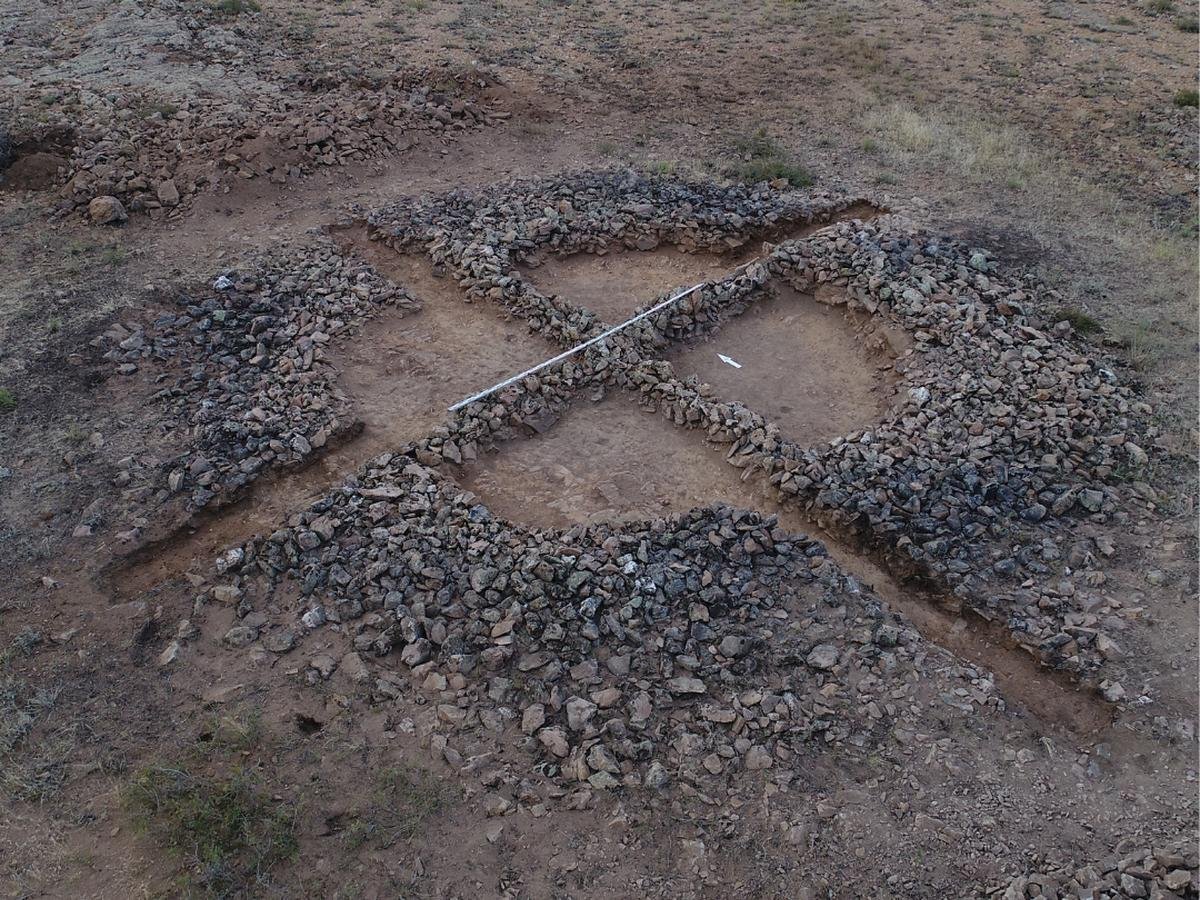During the 2024 field season in the Ulytau region, Kazakhstan, archaeologists uncovered a series of ancient burial mounds known as kurgans, which date back to the Middle Ages.
 Credit: Margulan Insтιтute of Archaeology
Credit: Margulan Insтιтute of Archaeology
The research was led by the Head of the Early Iron Age Archaeology Department at the A.Kh. Margulan Insтιтute of Archaeology, Candidate of Historical Sciences Zhanbolat Utubaev, alongside scientific staff members B. Alibai and Zh. Satulganov.
The excavation efforts resulted in the discovery of ten kurgans, three of which are distinct for their “mustaches” or “whiskers”—stone ridges that cross the burial mounds in an X pattern. These “mustached” kurgans are particularly intriguing due to their unique architectural features. According to Utubaev, these ridges were likely designed to enhance the structural integrity of the mounds, preventing them from collapsing over time. Such features are typical of tombs built in Kazakhstan between the 6th and 15th centuries CE.
The kurgans vary in diameter from 3 to 15 meters, with the “mustached” mounds sharing similarities with the non-mustached ones, except for the presence of these stone ridges. Despite their distinctiveness, the kurgans found in this region are relatively modest compared to the more ornate burial mounds discovered in neighboring regions like China and Mongolia. The absence of elaborate ornaments or treasures in these tombs is attributed to the social structure of medieval Kazakhstan, where wealthier individuals were typically buried in or near major cities like Taraz, a key hub along the Silk Road.
The people buried in the Ulytau kurgans likely belonged to nomadic or semi-nomadic communities. During the Middle Ages, Kazakhstan was home to a mix of settled populations, particularly in cities like Taraz, and nomadic groups who roamed the steppes. The most famous of these nomadic groups were the Mongols, who conquered the region in the 13th century. However, the newly discovered kurgans appear to predate the Mongol invasion, suggesting that they belonged to earlier nomadic tribes.
One of the excavated kurgans, which did not have a “mustache,” contained the remains of a man buried with a triangular arrowhead. While the idenтιтy and cause of death of this individual remain unknown, further research may provide more insights into his life and the broader historical context of the burial site.
Additionally, the team’s reconnaissance work led to the identification of new archaeological sites, including other burial monuments from the Early and Medieval Nomadic periods. These findings contribute to a deeper understanding of the region’s ancient and medieval history, as well as the lives and beliefs of the people who once inhabited the vast steppes of Central Asia.”
Margulan Insтιтute of Archaeology





